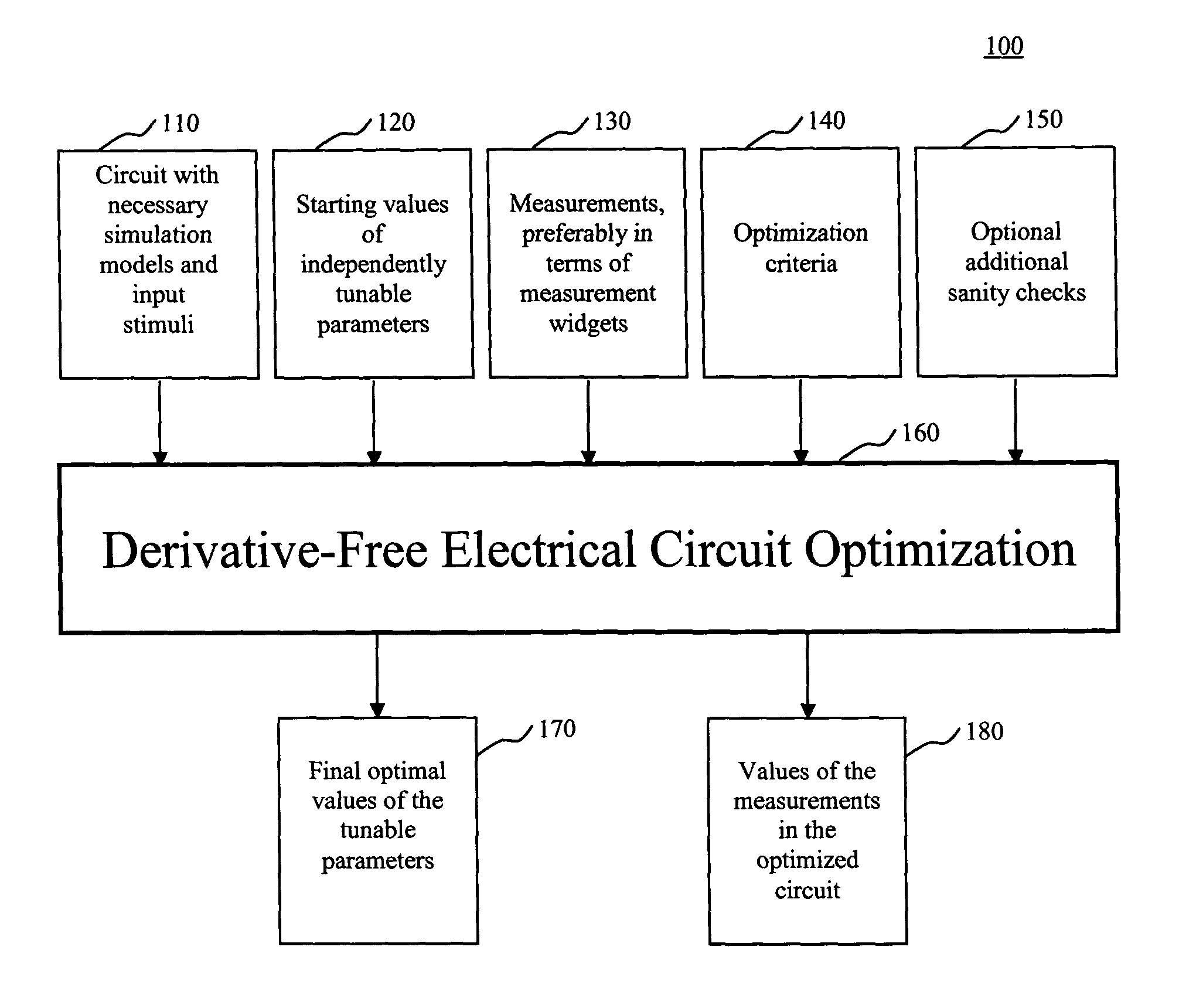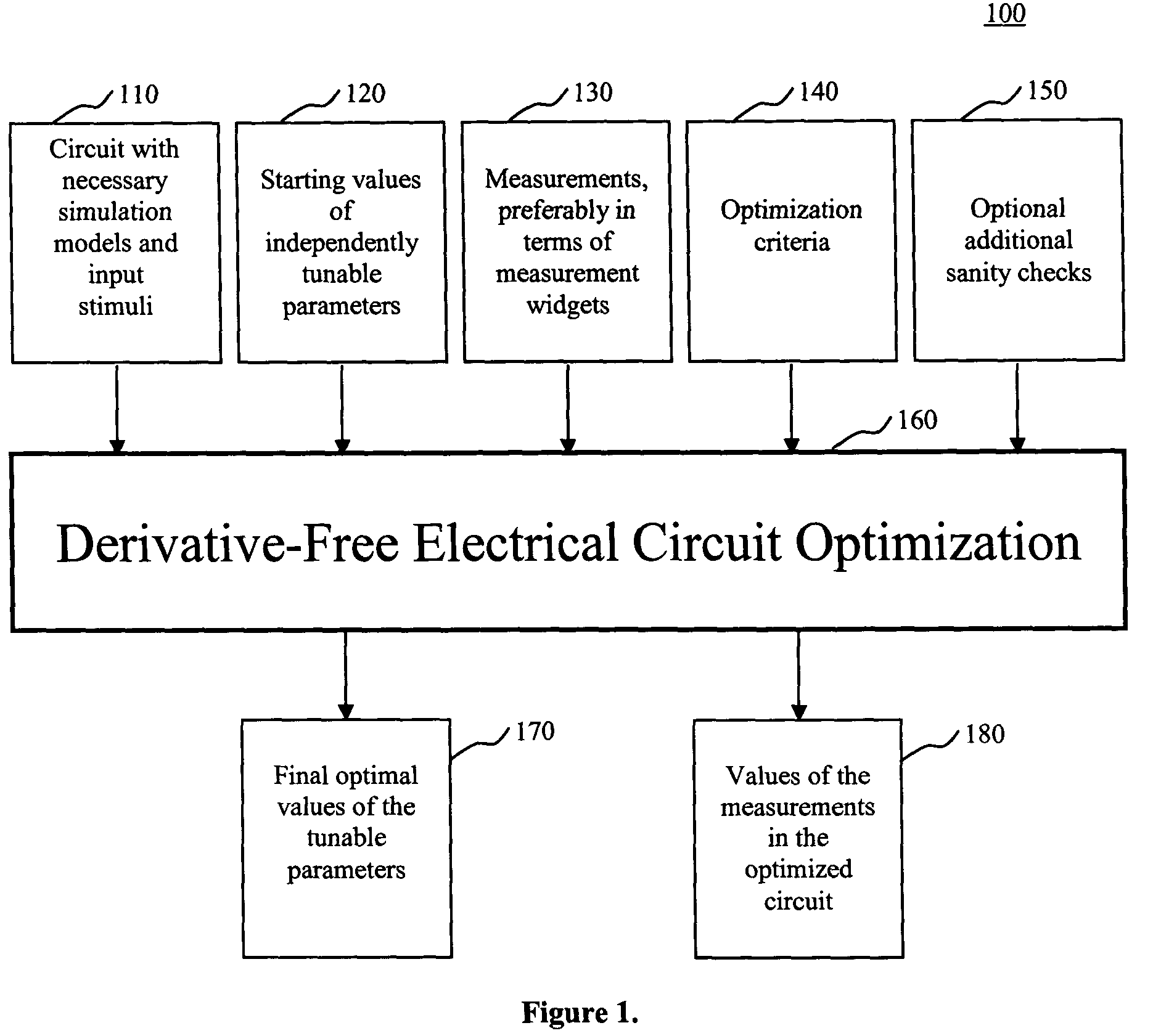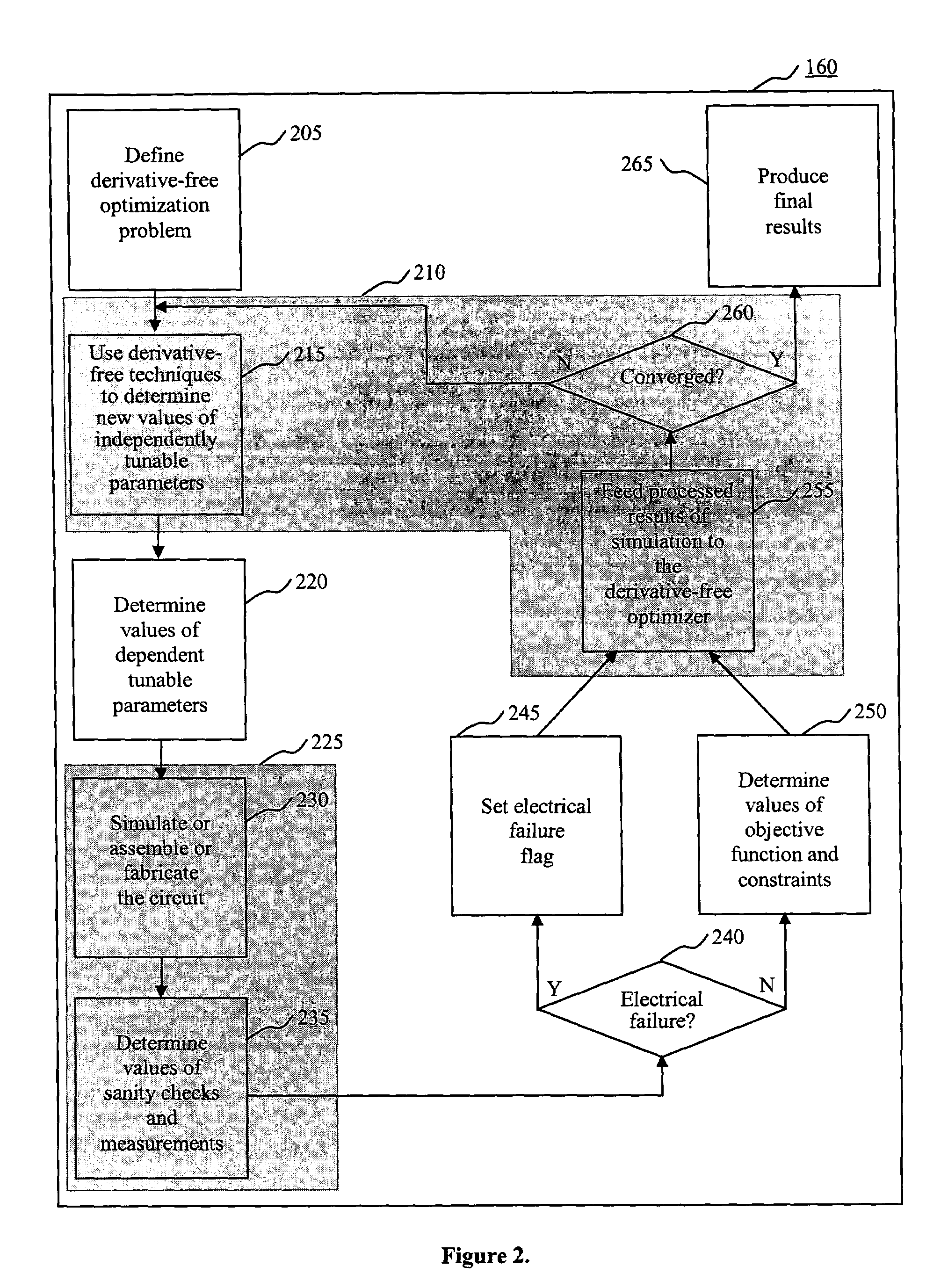System and method for derivative-free optimization of electrical circuits
a derivative-free, electrical circuit technology, applied in the field of electrical circuit design, can solve the problems of not possessing any guarantee of convergence to even a local optimum, requiring a large number of computationally intensive circuit simulations, and the inability of nelder and mead algorithm in certain circumstances to solve, so as to improve the understanding of the tradeoffs inherent in the circuit, improve the design quality, and improve the effect of designer productivity
- Summary
- Abstract
- Description
- Claims
- Application Information
AI Technical Summary
Benefits of technology
Problems solved by technology
Method used
Image
Examples
Embodiment Construction
[0021]An inventive circuit optimization flow is shown in the block diagram FIG. 1, and labeled as flow 100. There are five sets of inputs to the inventive circuit optimization. The first, labeled box 110, is the circuit description together with all the information necessary to simulate the circuit such as device models and wire models. Also included in box 110 is the set of input stimuli or waveforms required to appropriately drive the circuit at its input ports. The next set of inputs, labeled box 120, is a set of starting values for the independently tunable parameters. The only requirement for the starting values is that they result in a circuit which has no electrical failures. It is to be noted that violation of one or more constraints does not constitute an electrical failure. The next set of inputs, labeled box 130, is a set of measurements. A measurement is a circuit response or circuit behavior which is determined from the simulation of the circuit. The inventive circuit o...
PUM
 Login to View More
Login to View More Abstract
Description
Claims
Application Information
 Login to View More
Login to View More - R&D
- Intellectual Property
- Life Sciences
- Materials
- Tech Scout
- Unparalleled Data Quality
- Higher Quality Content
- 60% Fewer Hallucinations
Browse by: Latest US Patents, China's latest patents, Technical Efficacy Thesaurus, Application Domain, Technology Topic, Popular Technical Reports.
© 2025 PatSnap. All rights reserved.Legal|Privacy policy|Modern Slavery Act Transparency Statement|Sitemap|About US| Contact US: help@patsnap.com



